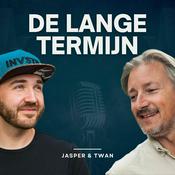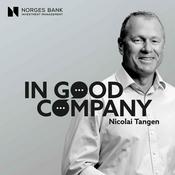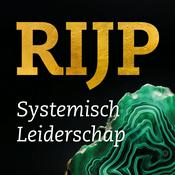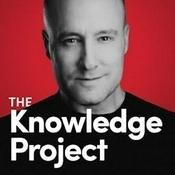Epicenter - Learn about Crypto, Blockchain, Ethereum, Bitcoin and Distributed Technologies
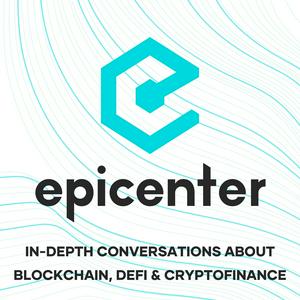
659 afleveringen

Solving The AI Black Box: ZK-Proofs in Defence Tech
26-12-2025 | 55 Min.
In this episode, host Sebastian Couture is joined by Ismael Hishon-Rezaizadeh, CEO of Lagrange, to explore the intersection of frontier cryptography and national security. Ismael discusses the transition of zero-knowledge (ZK) technology from a "token-centric" crypto tool to a vital component of defense, specifically focusing on its role in securing autonomous drone swarms and closing the hypersonic missile gap.They delve into Deep Proof, Lagrange's ZK-machine learning library, which facilitates verifiable AI execution while protecting sensitive model intellectual property and private input data. Ismael introduces the concept of "Accountable Autonomy," arguing that cryptographic proofs are necessary to ensure that lethal "kill chain" decisions are made by the correct models under verified inputs, removing the risks inherent in "black box" AI decision-making. Finally, the conversation touches on the geopolitical competition with China, the importance of domestic chip manufacturing, and why the US market's ability to align private sector innovation with military needs is a decisive strategic advantage.Topics00:00 Intro & Context04:15 ZKML vs. Venice09:30 Protecting Model IP15:00 Dual-Use Defense Pivot21:45 The Palantir Comparison27:10 US-China Chip Race35:20 Drone Swarm Consensus42:15 Accountable Autonomy Explained49:00 Kill Chain Verifiability55:30 EU vs. US DefenseLinksIsmael on X: https://x.com/Ismael_H_R Lagrange Labs: https://www.lagrange.dev/Anduril Industries: https://www.anduril.com/Gnosis: https://gnosis.io/Sponsors: Gnosis: Gnosis has been building core decentralized infrastructure for the Ethereum ecosystem since 2015. With the launch of Gnosis Pay last year, we introduced the world's first Decentralized Payment Network. Start leveraging its power today at http://gnosis.io

Aztec's Rebirth, The $61M Token Sale & Programmable Privacy on Ethereum
18-12-2025 | 1 u. 5 Min.
Fresh off the launch of the Ignition Chain and a successful community-led $61M token sale, Aztec Network co-founder Zac Williamson joins Friederike Ernst to unpack the "existential" journey of building programmable privacy. Zac opens up about the "sacrificial altar" moment where the team decided to kill their live product, Aztec Connect which had 60k users because they realized true decentralized privacy required rebuilding from scratch rather than iterative upgrades.They dive deep into the architecture of the new network, which utilizes a hybrid state model (encrypted UTXOs for privacy, public accounts for transparency) to enable composable applications. Zac challenges the cryptographic dogma of "don't roll your own crypto," arguing that for pioneers, relying on "battle-tested" libraries is impossible. He explains why decentralized sequencers are not just a moral choice but a security necessity to prevent government-mandated backdoors. Finally, Zac contrasts the chaotic but decentralized resistance to surveillance in the US with the increasing top-down control in the UK and Europe, framing Aztec as essential "defense in depth" for the digital age.Topics00:00 Intro 03:45 The "Sacrificial Altar": Killing Aztec Connect10:15 Hybrid Architecture: UTXOs vs. Accounts16:30 Why You Must "Roll Your Own Crypto"22:00 Decentralization as a Defense Against Backdoors28:15 Performance: Throughput & Latency Trade-offs34:40 Private Smart Contracts: Gaming & Identity41:00 The Macro View: US vs. EU SurveillanceLinksGnosis: https://gnosis.io/Zac Williamson on X: https://twitter.com/Zac_AztecAztec Network: https://aztec.networkNoir Language: https://noir-lang.orgSponsors: Gnosis: Gnosis has been building core decentralized infrastructure for the Ethereum ecosystem since 2015. With the launch of Gnosis Pay last year, we introduced the world's first Decentralized Payment Network. Start leveraging its power today at http://gnosis.io

Will stablecoins end the US debt Crisis?
11-12-2025 | 54 Min.
Ethereum co-founder Joe Lubin joins Friederike Ernst to discuss why we are at the "end of a supercycle," a chaotic transition period where legacy institutions are finally adopting blockchain rails not just for efficiency, but for survival. They explore the "inevitable convergence" where the US government may actively rely on stablecoins to absorb debt, effectively using crypto to extend the lifespan of the dollar. At the same time, banks scramble to compete with self-custodial wallets. Joe also details the structural evolution of Consensys, from an "organic blob" incubating projects like Gnosis to a focused software powerhouse. He differentiates Linea from competitors by highlighting its commitment to permissionless innovation where anyone can deploy a rollup without a "sign-off". He shares his vision for MetaMask evolving into a user-owned "full-service bank. Topics00:00 Intro & Paradigm Shift04:15 Crypto-Anarchy vs. Enterprise10:30 Banks & Stablecoins16:00 The Economic Supercycle24:45 Consensys History & Spin-outs33:20 Linea & Decentralization42:15 L1 Scaling & ZK48:00 Permissionless Rollups55:30 Future OptimismLinksJoe Lubin on X: https://twitter.com/ethereumJosephConsensys: https://consensys.ioLinea: https://linea.buildMetaMask: https://metamask.ioGnosis: https://gnosis.io/ Sponsors: Gnosis: Gnosis has been building core decentralized infrastructure for the Ethereum ecosystem since 2015. With the launch of Gnosis Pay last year, we introduced the world's first Decentralized Payment Network. Start leveraging its power today at http://gnosis.io

What will Quantum Computing Change?
03-12-2025 | 1 u. 21 Min.
Quantum computing is often dismissed as a distant sci-fi future, but Ethereum OG John Lilic and Oxford physicist Stefano Gogioso argue the timeline is shrinking fast with roadmaps converging around 2030. In this episode, they break down the "woeful" state of quantum readiness in crypto, explaining how Shor's algorithm could eventually shatter the elliptic curve cryptography protecting Bitcoin and Ethereum.They also explore the terrifying concept of "harvest now, decrypt later," which implies that encrypted data and privacy coins like Monero may essentially be compromised already. Finally, they introduce "Quantum Money," a revolutionary form of digital cash developed by Stefano’s startup NeverLocal, which relies on the laws of physics rather than blockchain consensus to prevent double-spending.Topics00:00 Intro03:00 John’s Quantum Awakening08:00 Defining Quantum Computing13:30 Logical Qubits Explained18:15 Crypto’s "Woeful" Readiness23:30 "Harvest Now" Threat28:45 Monero’s Privacy Risk33:15 What is Quantum Money?40:00 Investment & HedgingLinksJohn Lilic on X: https://x.com/LilicJohnStefano Gogioso on X: https://x.com/StefanoGogiosoNeverLocal: https://neverlocal.com Quantum.info: https://quantum.infoGnosis: https://gnosis.io/Sponsors: Gnosis: Gnosis has been building core decentralized infrastructure for the Ethereum ecosystem since 2015. With the launch of Gnosis Pay last year, we introduced the world's first Decentralized Payment Network. Start leveraging its power today at http://gnosis.io

DevConnect 2025: Inside The Biggest Ethereum Event in History
27-11-2025 | 44 Min.
“DevConnect 2025 was about touching and feeling Ethereum IRL”Nathan Sexer, lead of the DevConnect 2025 and Events team at the Ethereum Foundation, gives a peek into the largest iteration of Devconnect ever, with 20,000 attendees, and why the team pivoted to a "World's Fair" format, creating tangible districts for DeFi and Privacy to let attendees truly "touch and feel" the ecosystem.The conversation gets real about the friction of the physical world. He explained why Argentina’s crypto-native culture makes it the perfect host, how hyperinflation fueled bottom-up adoption, and even the venue-wide internet failure became an accidental "feature," breaking the on-screen silos and pushing genuine face-to-face connections.A massive geopolitical win was how the team worked with the government to issue 1,000+ visas for attendees from over 130 nationalities to make this event in the true spirit of borderless crypto.The Ethereum Foundation is heading to Mumbai in 2026! The goal for India is to unify a fragmented developer diaspora and bring regulatory attention to one of the world's most critical tech hubs.Topics00:00 Intro & Scale04:15 World's Fair Concept09:50 Why Argentina?14:30 Operational Challenges18:15 Internet Blackout22:00 Booth Renaissance28:30 Privacy Priority33:00 Devcon Mumbai37:40 Indian DevelopersLinksDevcon Twitter/X: https://twitter.com/EFDevconNathan Sexer on X: https://x.com/nethan_ethEthereum Foundation: https://ethereum.orgGnosis: https://gnosis.io/Sponsors: Gnosis: Gnosis has been building core decentralized infrastructure for the Ethereum ecosystem since 2015. With the launch of Gnosis Pay last year, we introduced the world's first Decentralized Payment Network. Start leveraging its power today at http://gnosis.io
Meer Zaken en persoonlijke financiën podcasts
Trending Zaken en persoonlijke financiën -podcasts
Over Epicenter - Learn about Crypto, Blockchain, Ethereum, Bitcoin and Distributed Technologies
Luister naar Epicenter - Learn about Crypto, Blockchain, Ethereum, Bitcoin and Distributed Technologies, The $100 MBA Show en vele andere podcasts van over de hele wereld met de radio.net-app

Ontvang de gratis radio.net app
- Zenders en podcasts om te bookmarken
- Streamen via Wi-Fi of Bluetooth
- Ondersteunt Carplay & Android Auto
- Veel andere app-functies
Ontvang de gratis radio.net app
- Zenders en podcasts om te bookmarken
- Streamen via Wi-Fi of Bluetooth
- Ondersteunt Carplay & Android Auto
- Veel andere app-functies


Epicenter - Learn about Crypto, Blockchain, Ethereum, Bitcoin and Distributed Technologies
download de app,
luisteren.
















